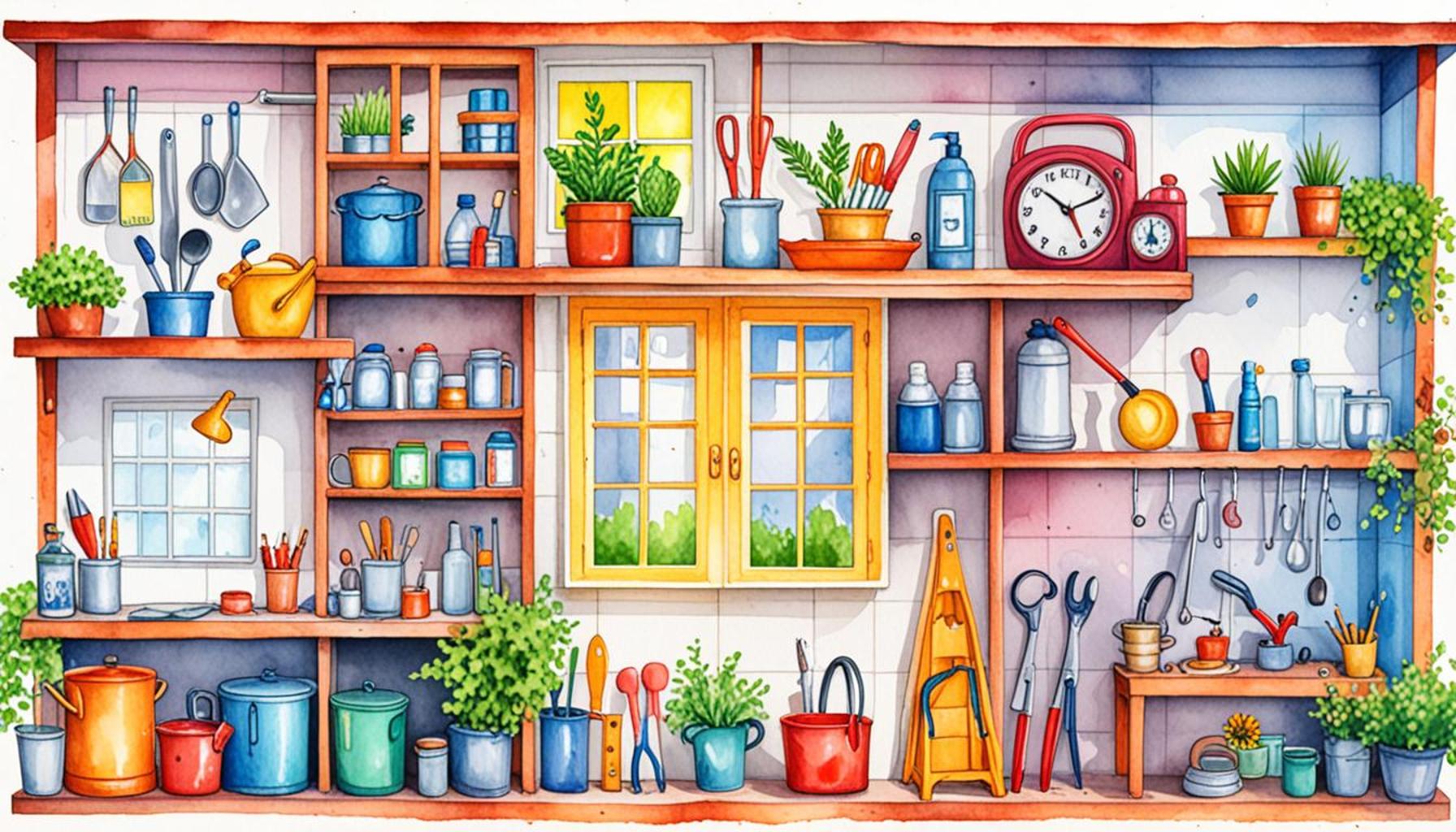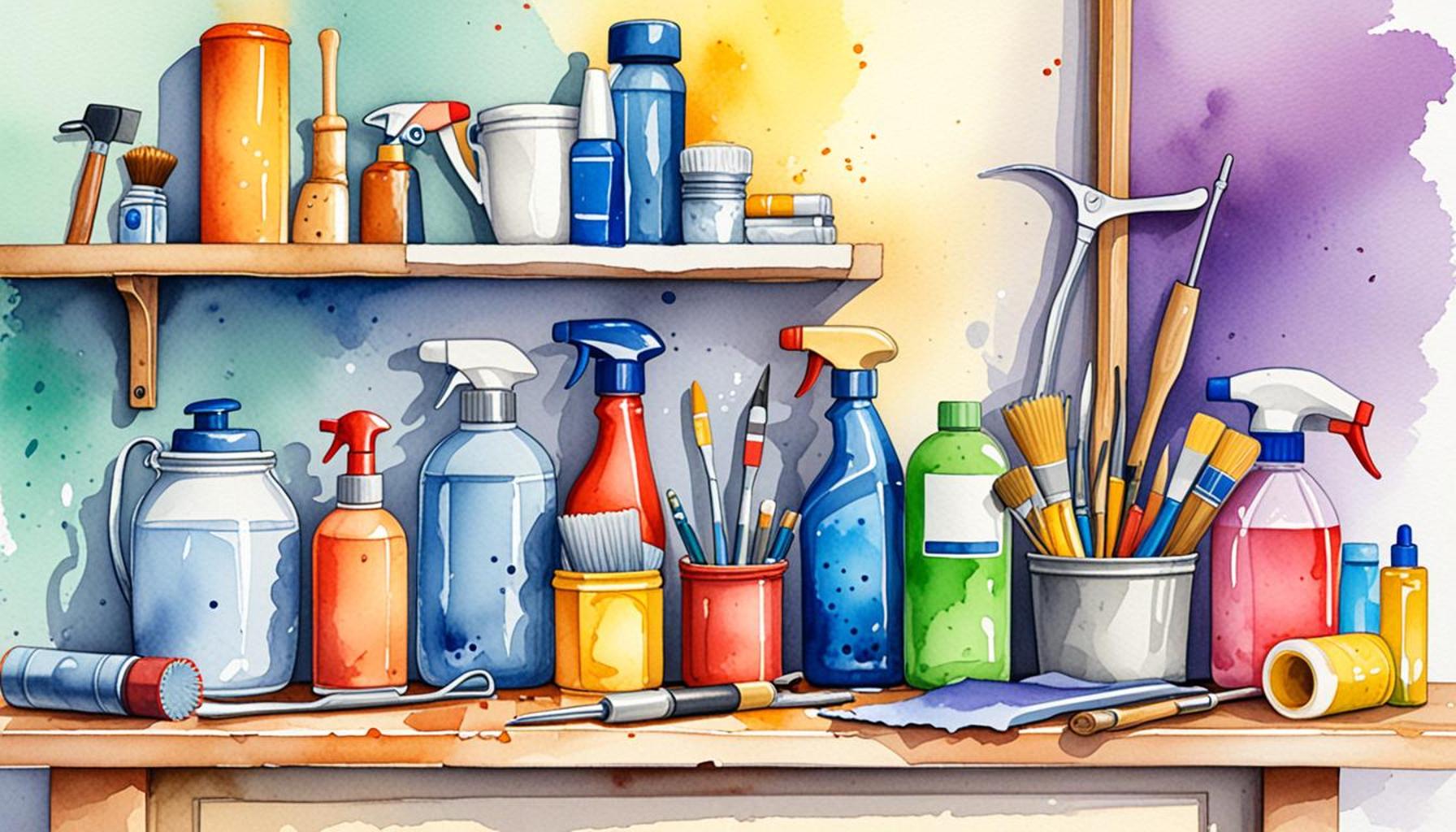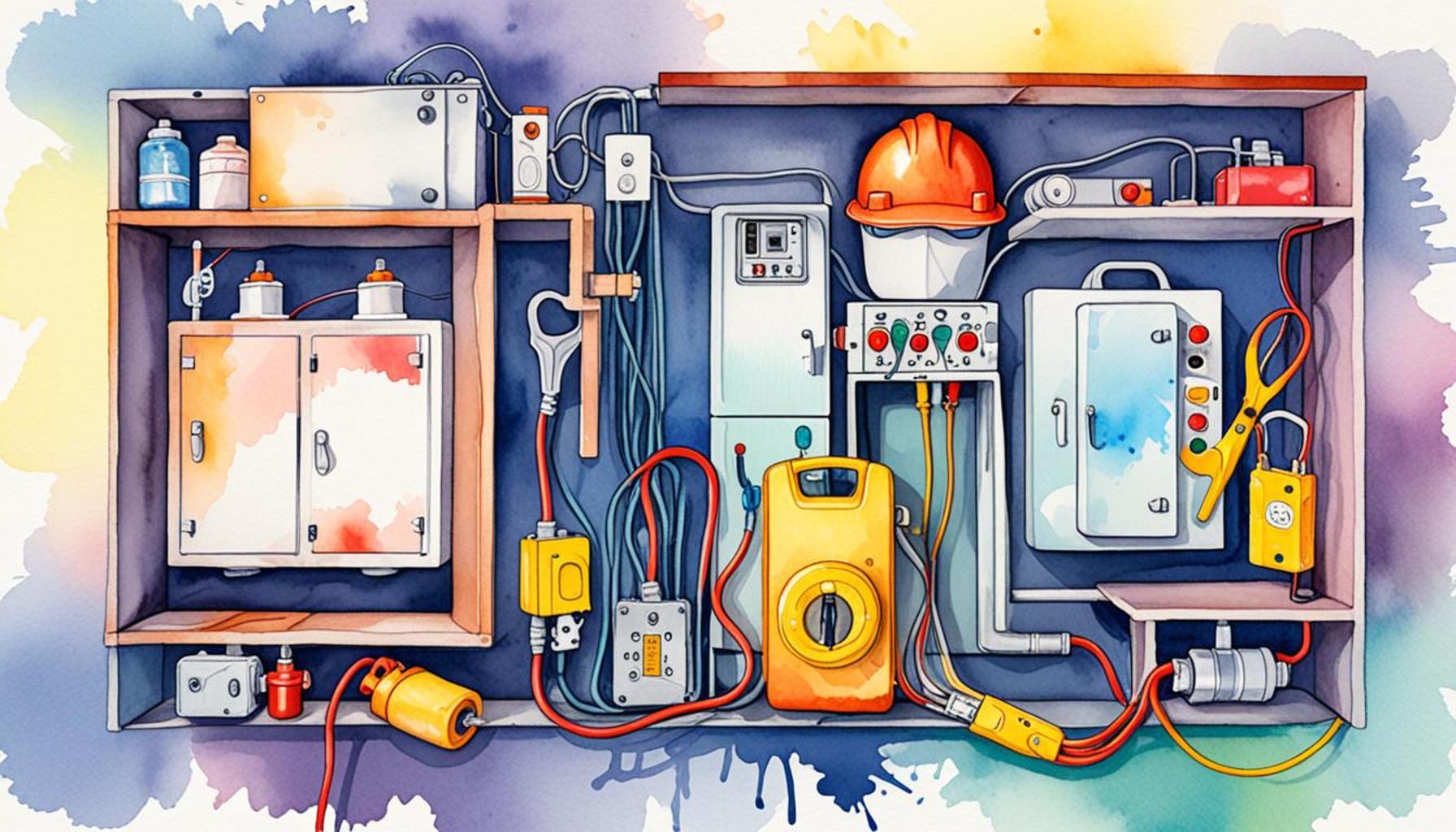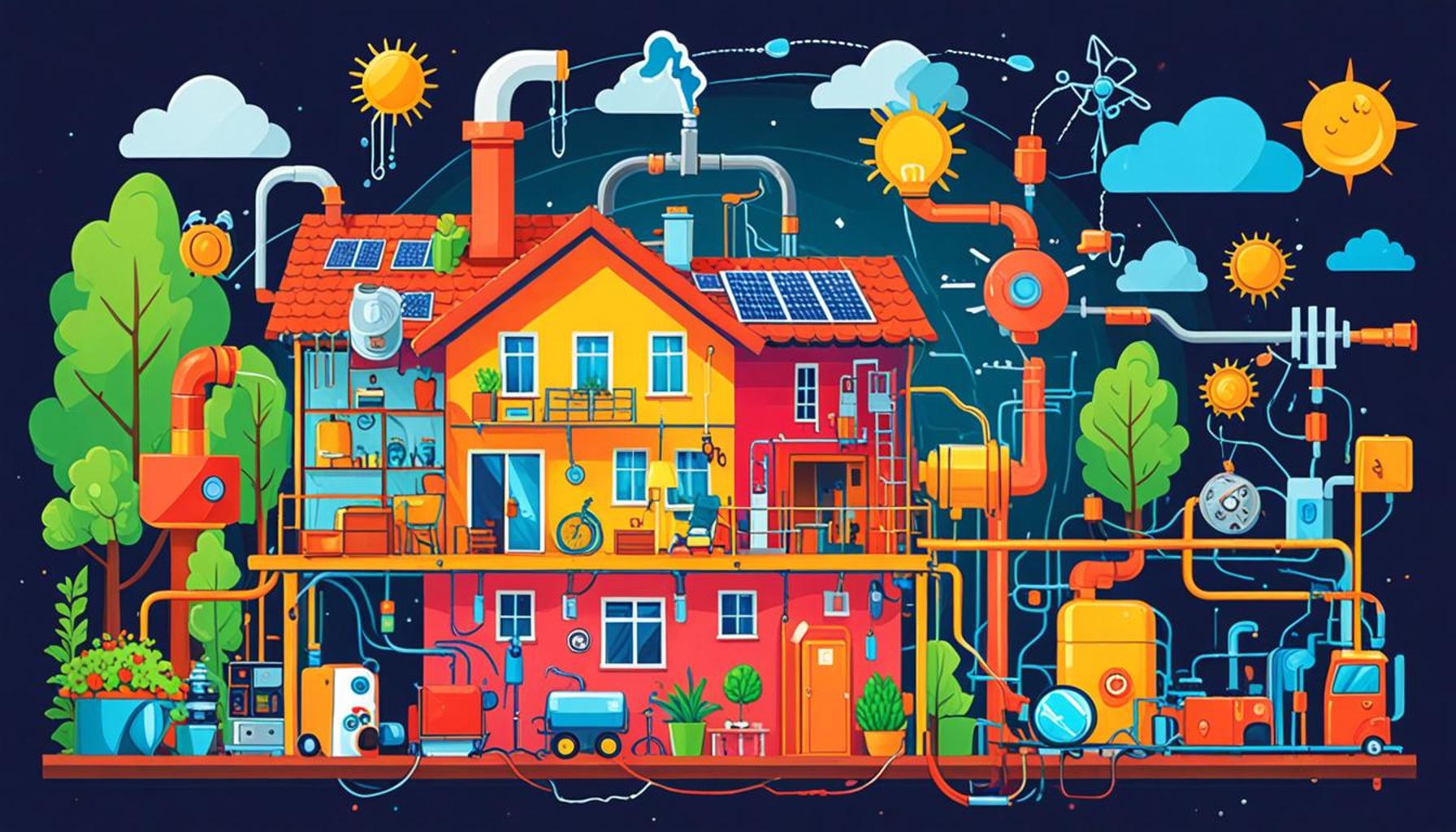How to Create an Effective Preventive Maintenance Schedule for Your Home

Importance of Preventive Home Maintenance
Keeping your home in top condition encompasses more than just cleaning and tidying; it’s an ongoing commitment to safeguard your investment. By implementing a preventive maintenance schedule, homeowners can proactively find and fix small issues before they spiral into major problems. This commitment is crucial for ensuring safety, comfort, and the overall longevity of your residence.
One of the most compelling reasons to maintain a regular schedule is cost savings. For example, a minor leak in a pipe may not seem alarming at first, but if left unaddressed, it can lead to extensive water damage, mold formation, or even structural issues. By identifying and repairing these minor issues early, homeowners can avoid hefty repair bills, preserving their finances for other vital investments.
Moreover, a consistent upkeep routine can increase property value. As potential buyers evaluate homes, they often consider the overall condition and maintenance history. Regular maintenance not only enhances your home’s aesthetics but also demonstrates to buyers that they are making a sound investment. For instance, a well-maintained HVAC system can signal efficiency and longevity, making your property more attractive on the market.
Home maintenance also plays a vital role in ensuring comfort and safety. Appliances such as ovens, water heaters, and heating and cooling systems require regular inspections to function safely and efficiently. For instance, neglecting your HVAC system can result in indoor air pollutants, impacting your family’s health. Routine maintenance checks can help identify issues ranging from malfunctioning parts to dangerous carbon monoxide leaks, ensuring your home remains a safe haven for you and your loved ones.
To develop an effective preventive maintenance schedule, it’s essential to focus on several key areas within your home:

- HVAC Systems: Schedule biannual inspections and cleanings to maintain efficiency and extend the lifespan of your heating and cooling systems.
- Plumbing: Regularly check for leaks, water pressure issues, and signs of corrosion to minimize the risk of water damage.
- Roofing: Inspect your roof at least once a year and after major storms to identify missing shingles or damage that could lead to leaks.
By approaching home maintenance with a structured and thoughtful plan, owners can deftly allocate their time and resources, effectively keeping potential problems at bay. In the sections that follow, we will discuss actionable steps to craft a customized preventive maintenance schedule, tailored to your home’s unique requirements and climate considerations. This comprehensive guide aims to empower you with the knowledge to safeguard your living environment, ensuring that your home feels both secure and welcoming for years to come.
DISCOVER MORE: Click here for essential tools
Identifying Key Areas for Maintenance
Creating an effective preventive maintenance schedule begins with a thorough assessment of your home’s essential systems and structures. By identifying key areas that require regular attention, homeowners can prioritize repairs and maintenance tasks that will have the most significant impact on safety, functionality, and overall performance. Here’s how to get started:
1. Interior Systems and Appliances
Indoor systems, such as plumbing, electrical, and HVAC, should be at the forefront of your maintenance agenda. Regular inspections and servicing can mitigate potential hazards and inefficiencies. Consider these actions:
- HVAC Maintenance: Schedule biannual check-ups for your heating, ventilation, and air conditioning systems. This includes changing filters, cleaning ducts, and checking for wear and tear.
- Plumbing Checks: Inspect for leaks around faucets, toilets, and under sinks. Also, monitor water pressure; drastic changes may indicate hidden issues.
- Electrical Systems: Have a licensed electrician inspect your wiring, circuit breakers, and outlets every couple of years. Look out for any signs of frayed cords or tripped breakers as indicators of electrical hazards.
2. Exterior Maintenance Essentials
The exterior of your home is subjected to various weather conditions that can damage its structure and appearance. Regular assessment of these areas ensures that your home remains both functional and attractive:
- Roof Inspection: As part of your annual maintenance routine, inspect your roof for missing shingles, sagging, or water stains that could indicate leaks. After severe weather events, conduct a thorough inspection to catch any new damage early.
- Gutter Cleaning: Clear leaves and debris from gutters at least twice a year, especially in spring and fall, to ensure proper drainage and prevent water damage to the foundation.
- Exterior Painting: Check for peeling or blistering paint as this could expose bare wood to moisture. Plan for repainting every five to seven years to maintain both aesthetics and protection.
3. Seasonal Considerations
Seasonal changes bring unique challenges and opportunities for home maintenance. Tailoring your schedule to accommodate these changes can be advantageous:
- Winter Precautions: Prepare plumbing by insulating pipes and checking heating equipment. Inspect insulation in attics and basements to conserve energy.
- Spring Refresh: After winter’s toll, spring is the perfect time for deep cleaning and inspecting for winter-related damage, including roofs and gutters.
- Summer Readiness: Check your air conditioning system and ensure outdoor spaces, such as patios and decks, are ready for social gatherings.
- Fall Preparations: Before winter, service your heating systems and ensure window seals are intact to prevent heat loss.
By methodically assessing these key areas within your home and dedicating time to address their specific maintenance needs, you can create a comprehensive preventive maintenance schedule. This proactive approach not only helps maintain the functionality and safety of your home but also extends the life of its systems, ultimately providing peace of mind.
Steps to Create Your Preventive Maintenance Schedule
Creating an effective preventive maintenance schedule for your home is essential for preserving the value of your property and ensuring a safe living environment. By systematically addressing maintenance tasks, you can avoid costly repairs and extend the lifespan of essential systems. Here are the key steps to follow:
1. Assess Your Home
Begin with a thorough inspection of your home. Identify key systems and components that require maintenance, such as the HVAC system, plumbing, roofing, and appliances. Document their current condition, estimating how often they need professional service.
2. Prioritize Tasks
Based on your assessment, prioritize the maintenance tasks. Some tasks, like changing air filters or checking smoke detectors, should be done monthly, while others, like roof inspections, may only need annual attention. Make a list detailing when each task should be performed.
3. Create a Calendar
Utilizing a digital calendar or a physical planner can help visualize your schedule. Mark down each task with reminders to ensure nothing is overlooked. Setting specific dates boosts accountability and routine, leading to more disciplined upkeep.
4. Track Completed Tasks
After completing each maintenance task, note it in your calendar or planner. This practice not only serves as a record but also highlights areas consistently cared for and those possibly needing additional attention in the future.
5. Review and Adjust
Life changes, and so do the maintenance needs of your home. Review your schedule annually, adjusting tasks and frequencies based on past performance and new situations. Being flexible can provide better results as you develop a routine that fits your lifestyle.
Digital Tools to Assist
In our technology-driven era, several apps are available to assist in managing your preventive maintenance schedule. These tools allow homeowners to set reminders and access instructional guides, making it easier to perform routine tasks. Explore platforms that offer customizable maintenance schedules tailored to your specific home needs.
Engaging Professionals
For tasks that may require specialized skills or tools, don’t hesitate to engage professionals. Establishing relationships with quality service providers can ease the burden of home maintenance, ensuring safety and efficiency.
| Category | Key Benefits |
|---|---|
| Improved Safety | Regular inspections reduce hazards, increasing safety. |
| Cost Savings | Preventive maintenance minimizes unexpected repair costs. |
| Increased Longevity | Care for systems extends their operational lifespan. |
| Home Value Protection | Regular maintenance helps preserve your home’s market value. |
DISCOVER MORE: Click here to learn about the importance of preventive maintenance
Creating a Tailored Maintenance Plan
Once you’ve identified the key areas of your home that require regular attention, the next step is to create a tailored maintenance plan that addresses both your home’s needs and your personal schedule. An effective preventive maintenance schedule should be manageable and realistic, ensuring that no critical aspect is overlooked. Here are some strategies to construct a plan that works for you:
1. Establish Clear Timeframes
Defining a frequency for inspections and maintenance tasks is crucial in ensuring that they are completed timely. Consider categorizing tasks based on how often they should be performed:
- Monthly Tasks: Some activities require more frequent attention. For instance, checking smoke and carbon monoxide alarms should be done every month. Similarly, inspecting your fire extinguishers and cleaning your dishwasher filter can contribute to overall home safety and efficiency.
- Quarterly Maintenance: Every three months, allocate time for tasks like checking external weather-stripping, cleaning refrigerator coils, and maintenance of landscaping. These periodic checks can prevent larger issues from developing.
- Annual Reviews: Schedule an extensive annual review for items that warrant deeper inspections, such as your electrical system, roof, and overall home safety. This can be an excellent time to enlist professional services if you feel unsure or if an issue arises.
2. Document Everything
Having a written record of maintenance activities helps track completed tasks and sets reminders for upcoming ones. An organized documentation system can streamline the maintenance process:
- Use Calendar Reminders: Take advantage of digital calendars or apps to set reminders. Mark dates for preventive maintenance tasks and set alerts a week before each appointment.
- Log Details: Keep a maintenance log to document what was done during each inspection, including dates, findings, and any replacements made. This can be valuable for future references and when discussing your home with potential buyers.
3. Engage Professionals When Needed
While many maintenance tasks can be completed by homeowners, some require professional expertise. Hiring licensed contractors can help ensure your home is well-maintained:
- Regular Professional Inspections: For critical systems such as HVAC and plumbing, engage certified professionals for routine checks to address issues that may be beyond a homeowner’s expertise.
- Emergency Services: Familiarize yourself with local emergency contacts for various services. Knowing who to call for urgent matters, such as water damage or electrical failures, can save valuable time and mitigate damages.
4. Be Flexible and Adjust as Needed
As with any plan, flexibility is a key component. Life circumstances change, and your preventive maintenance schedule should be adaptable to those changes:
- Reassess Regularly: Every year or whenever significant renovations occur, take the time to reassess your maintenance needs. This allows you to update your schedule based on the current state of your home.
- Seasonal Adjustments: Be prepared to adapt your schedule based on seasonal demands or local environmental factors. For example, homes in colder climates may require more frequent snow removal and winter preparedness steps.
By developing a comprehensive and tailored preventive maintenance schedule, you can ensure that your home remains safe, comfortable, and functional for you and your family. Engaging in a proactive approach not only keeps potential problems at bay, but it also enhances the longevity and value of your home investment.
DISCOVER MORE: Click here to learn about eco-friendly cleaning solutions
Conclusion
In conclusion, creating an effective preventive maintenance schedule for your home is crucial not only for safeguarding your investment but also for enhancing your family’s safety and comfort. By identifying key maintenance tasks, establishing clear timeframes, and documenting everything, you lay the groundwork for a proactive home care strategy. Engaging professionals when necessary and remaining flexible to adapt your schedule as life changes are also integral components of an effective plan.
Remember, it’s not just about the immediate upkeep of your home; a well-planned maintenance schedule can help identify potential problems before they escalate into costly repairs. For instance, regular inspections of your roof and plumbing can protect your home from unexpected leaks and structural issues. Moreover, repeating tasks seasonally, such as preparing for winter or summer, ensures your home is equipped to face varying environmental challenges.
Ultimately, investing your time and effort in a preventive maintenance schedule can lead to significant long-term savings and peace of mind. Consider leveraging available resources, such as local contractors or digital tools, to further assist you in managing your home efficiently. With a well-structured maintenance plan, your home will not only stay in good condition but will also retain its value in the competitive real estate market. Start implementing your tailored schedule today, and enjoy the benefits of a well-maintained living space that serves you and your family for years to come.


